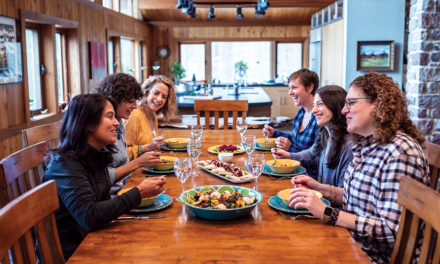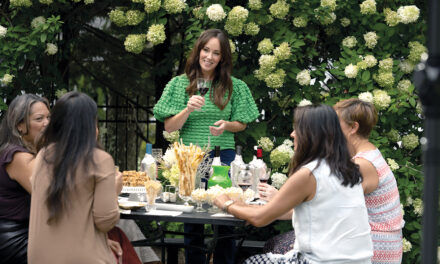Even without years of culinary training, you can upgrade your cooking skills with the right approach and without all the fat and calories often loaded into restaurant food. Here, three prominent Philly chefs give us a glimpse into their cookbooks to help us turn up the heat.
There’s a reason restaurant food tastes so much more heavenly than what we whip up at home: It’s often doused in butter and salt. Surely there must be a healthier—but still mouth-watering—way to cook. We asked three local female chefs to share their secrets for creating delicious restaurant-quality dishes at home, minus the fat, calories, and sodium.
 Feel the Heat
Feel the Heat
Moon Krapugthong, chef-owner of Chabaa Thai Bistro, wishes more diners would be adventurous with chilies. “Every kind of chili has a different character, flavor, and heat,” she says, but they’re all calorie- and fat-free “and add a lot of flavor, whether you’re putting fresh chilies in salads or making Thai food with chili paste.” Krapugthong recommends you begin with red chili paste, which lends a milder, sweeter heat to curries or sautés, and then work toward green chilies and chili paste when you’re ready for serious spice.
Layer Salt
It seems counterintuitive, but by salting each individual ingredient while cooking, you’ll use less salt overall—welcome news for everyone, especially individuals with high blood pressure. “If a recipe calls for one teaspoon of salt, don’t add it all at once,” says Barbie Marshall, chef partner of SOOP Catering. “If you’re making stuffing, first you can add a pinch of salt to the veggies as you sweat them. Then, when you add the apples and mushrooms, give it a taste and maybe add a pinch more.” This step-by-step tailoring lets you control sodium levels while bringing out the flavor of individual ingredients.
 Bean Me Up
Bean Me Up
Canned beans are easy, but they can have a slimy film, and many can linings contain bisphenol-A, a chemical linked to heart disease and negative developmental, immune, and reproductive effects. Emily Seamen of Dizengoff, an Israeli-style hummus shop, can’t get enough of dried beans. “They’re affordable, last a long time, they’re high in protein, low in fat, and they don’t take all that long to cook—just soak them overnight and cook for an hour, maybe with onion, garlic, thyme, and bay leaf.” After that, the possibilities are endless: chilis, soups, salads, vegetarian pastas, and Seamen’s favorite, hummus. Her basic recipe: Soak one pound of dried chickpeas in double the water by volume overnight. Next, add the drained beans to a pot with four times the water by volume plus 2 T baking soda (her secret for dissolving the skins and getting the beans extra soft) and boil for a few minutes, then simmer until tender, periodically skimming foam off the top. Add cooked beans to a food processor with one pound of tahini, one peeled head of garlic, 2 cups of lemon juice, and ¼ cup ground cumin. Add ice water as needed until you reach a smooth consistency, and season with salt.
Pack Your Bags
Need motivation to eat more produce? Seamen, dubbed “The Vegetable Whisperer” by the media, loads up on cauliflower, squash, zucchini, and romaine at the farmer’s market and then spends time washing, prepping, and stashing them in the refrigerator. “That way, I can guilt myself into eating it all,” she explains. “If I’m thinking of eating out, I won’t let myself because I don’t want all of that produce to go bad.” The result: you, stashing your thicker wallet in your smaller-sized jeans.








